Facebook Reactions have gained a lot of traction since they were first launched in 2016.
And when I say a lot, I mean a lot.
Since Facebook Reactions were launched, we’ve shared over 300 billion Reactions.
This works out to over 800 million Reactions per day.
But what’s the big deal with Facebook Reactions, and why do businesses need to care about them?
We all know that Facebook’s algorithms look at how you interact with the content in your newsfeed in order to decide which posts they should continue showing in your feed.
And when Facebook Reactions were first introduced, Facebook assigned these Reactions the same value as Likes.
Here’s what this means (or rather, what it meant):
If you Like a post from Company A and you react (“Love”, “Haha”, etc.) to a post from Company B, the subsequent posts both companies make have an equal chance of appearing on your newsfeed.
But in 2017, Facebook revealed that they tweaked their algorithm … and that they now assign a greater value to Reactions than Likes.
.@Facebook says that Reactions have greater values than Likes #socialmediamarketing
Click To Tweet
Let’s look at the same example we just shared.
With the updated algorithm, Company B will have a higher chance of appearing on your newsfeed, even though you interacted with both Company A and B’s posts.
What does this mean for your business?
If you want to maximize your reach and appear in as many of your fans’ newsfeeds as possible, you need to post content that elicits an emotional reaction in your audience.
At this point, you might be wondering…
Where do I go to look at my fans’ reactions?
As of now, there isn’t a tool within Facebook that shows you the different Reactions your page has amassed over time.
If you want access to this information, you’ll need to use a third-party platform, such as Socialbakers.
With Socialbakers’ “Evolution of Reactions Over Time” feature, you can look at how your Reactions are distributed over a single day, week, or month.
But what if you want to do a deep dive and look at the Reactions on your individual posts?

Cool beans. Now that you know how to track your fans’ reactions, let’s go talk about how you can get your fans to React more to your content.
How businesses are getting fans to use more reactions
The key to encouraging your fans to use Reactions is to curate your content properly.
You could post something funny like Ben & Jerry’s:
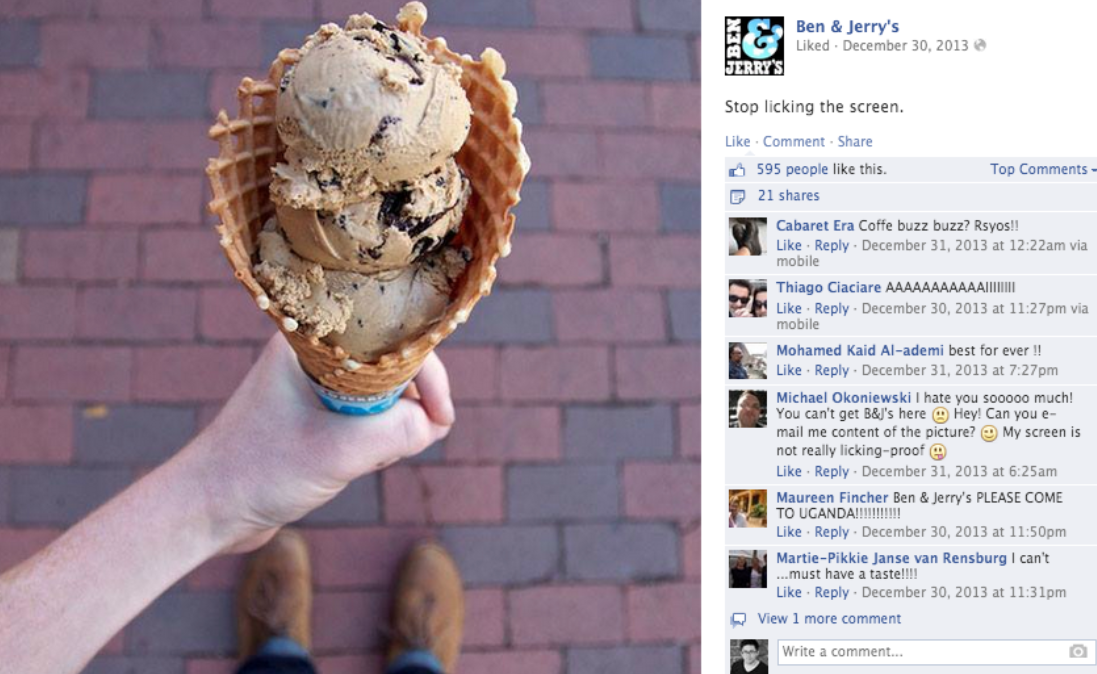
Who wouldn’t be licking the screen at this point?
Or, you could be a bit more personal, like Humans of New York:
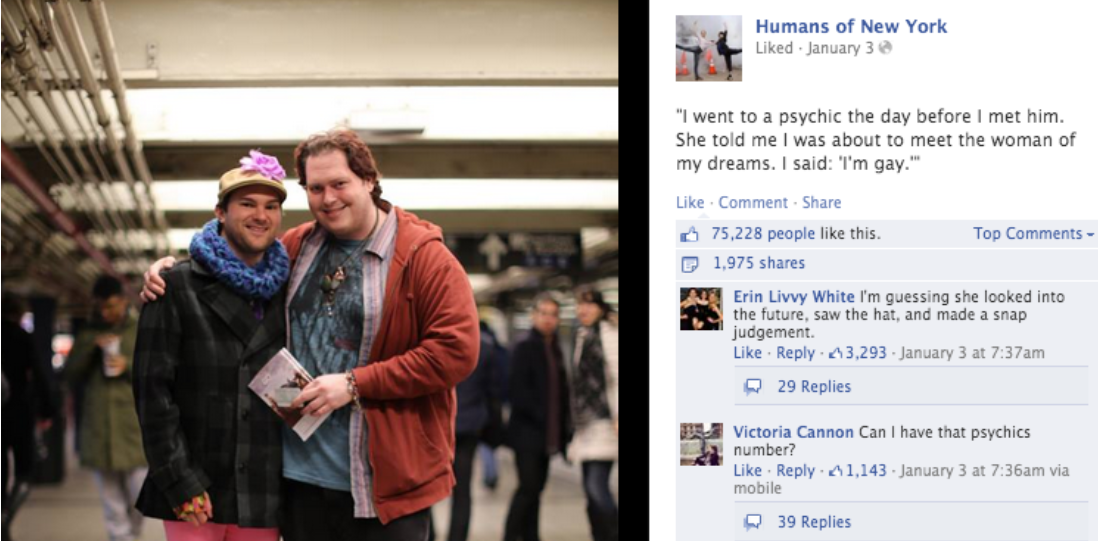
But, let’s face it…
… you can’t just post a picture with a quirky caption and expect to get hundreds or thousands of shares right off the bat.
First, you need to build brand loyalty and have followers who interact with your posts daily.
How do you get to that point? Keep reading to find out!
1. Post content designed to evoke specific emotions
Take a good, hard look at the posts on your company’s Facebook page.
Are they compelling and thought-provoking enough to warrant a Reaction?
Or are they generic, uninspiring, and just kind of meh?
If your Facebook posts fall into the latter category, you can do better!
Here’s the thing:
It’s actually not that difficult to gauge what sort of content will do well in terms of eliciting Reactions. People are pretty predictable that way.



On that note, don’t feel like you should only be encouraging positive Facebook Reactions, and steering clear of the “negative” ones…
…According to Jonah Berger, author of Contagious: Why Things Catch On, content that triggers Angry Reactions in readers is 34% more likely to end up on the New York Times “Most Shared” page.
As long as your Facebook posts make your fans feel something, you’re on the right track.
Pro Tip: If your post does hit it big, it might be a good idea to boost that post. Posts that perform well naturally perform exponentially better when boosted than meh posts that are boosted.
2. Tease followers with “Coming Soon” posts
Quick question… before you go to the movies, do you watch the trailer?
I’m willing to bet you just thought “Yes, of course! Who doesn’t?“.
If I’m right, this proves my next point:
People love teasers!
Product teasers help to bring potential buyers closer to the product (and get them excited for its release).
Eleven Oaks Boutique does this well. Nearly every day, they put together a picture collage of what they’re releasing the next day.
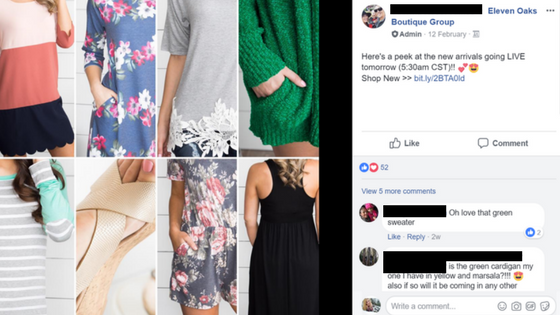
Sounds exciting, right? Their followers seem to think so, as their average post gets anywhere from 50 to 500 reactions.
You might not be able to post a teaser every single day, but including them in your mix of content is sure to get your fans’ attention.
3. Host a giveaway
Giveaways get your audience involved with your launch through shares and feedback.
By giving away items that are relevant to your business (as well as appealing to your audience), you have the ability to expand your social reach.
But your giveaway shouldn’t ask people to give you Reactions to enter. This runs the risk of being labeled engagement bait and penalized by the recent Facebook News Feed changes. Instead, try one of these options:
- “Comment to win it!” posts. Facebook’s algorithms tend to give more weight to comments than likes. Using this strategy will allow your post to get more traction.
- “Caption this!” posts. This is possible the best way to host a giveaway. All you have to do is post a picture and let your followers come up with a quirky caption for it. Whoever posts the best one, wins!
Take a look at how much traction this “Caption this!” post received.
20 people liked it, 20 people shared it, and 10 people commented on it!
Not bad for just posting a picture, right?
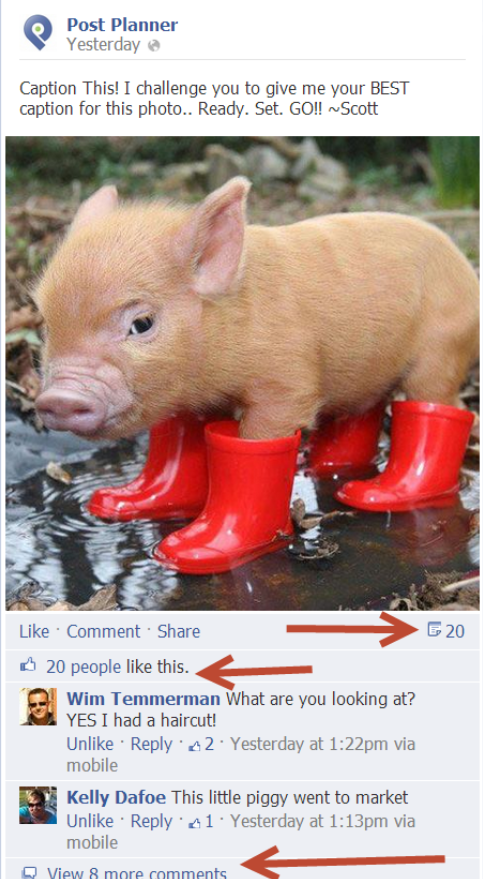
Pro tip: Set up your next giveaway through RaffleCopter for a stress-free process!
4. Post inspirational quotes
Not everything you post has to be focused around a like, comment, or shares.
Just like you, your Facebook followers have rough “I can’t do this anymore!” days. Why not spread a bit of positivity, like Marie Forleo, once in a while?
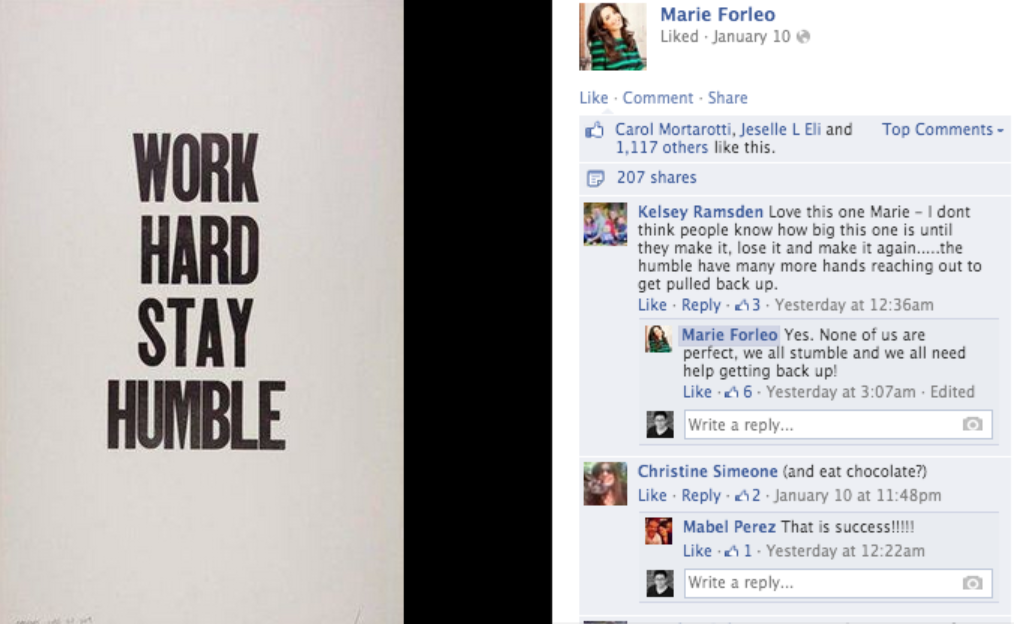
As you can see, this post got a lot of engagement.
One person even reached out to Marie, saying that they “Loved this one”. And, of course, there was a jokester among the comments (eating chocolate is always a good idea).
The point is, a lot of people were able to relate to Marie’s picture quote. Why?
Because it’s easily relatable. People tend to “like” (and share and react to) things they can relate to. So start sharing those types of posts!
5. Question your audience
My final strategy to elicit Facebook Reactions is this:
Question your audience!
Even if the question you ask has nothing to do with your business.
The answer?
There’s no such thing as too much pepperoni.
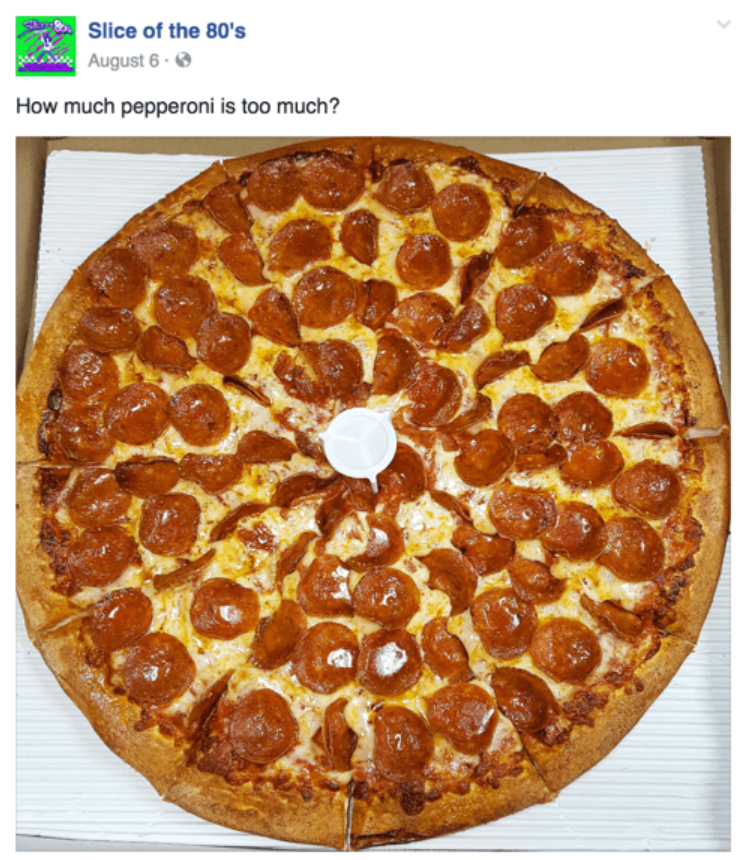
There are many questions you could prompt followers to answer, such as:
- What’s your favorite…?
- Why do you…?
- How do you…?
- What was your favorite moment from experience/memory…?
- Do you think…?
Asking a question isn’t enough, though.
You’ve got to respond to each answer!
Even if it’s a short “Oh, that’s awesome” or “I feel the same!” answer. Your engagement prompts even more engagement, because your followers feel heard.
Bonus: Prompt your followers to talk to each other.
For example, if two people say their favorite sandwich is peanut butter and pickle, comment back by saying “Really?! [Name] Also loves that! What makes you two enjoy it so much?“.
Not only will you drum up more engagement, you might even start a lifelong friendship.
Final words on Facebook Reactions
I’ve managed many Facebook pages in my time, so hey – I get how tough this is.
Facebook’s algorithm can be absolutely brutal.
You could have 10,000 fans, but (because the algorithm is limiting your reach) get only two measly likes on your status updates.
(And maybe one’s from mom.)
So here’s the deal:
You gotta be on your toes and keep trying new things.
Now you know how to optimize your posts to generate more Facebook Reactions. What’s next?
The post How to Get More Facebook Reactions (Plus Exactly Why They’re Crucial for Your Brand) appeared first on Revive Social.